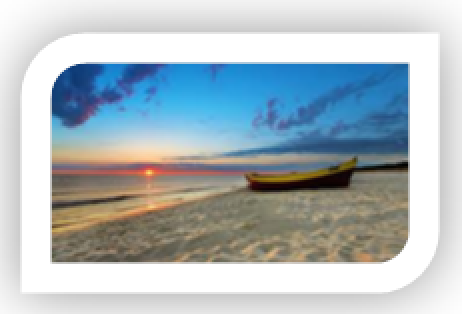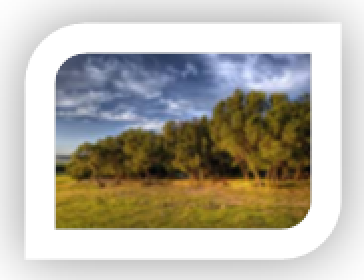Feliberto Palomino Toledo1
Yedennis Padin Pérez1

Family education based on climate change
La educación familiar en función del cambio climático
Educação familiar baseada na mudança climática
Nancy Amor Pérez1 ![]() http://orcid.org/0000-0003-2439-5724
http://orcid.org/0000-0003-2439-5724
Feliberto Palomino Toledo1 ![]() http://orcid.org/0000-0003-2782-2533
http://orcid.org/0000-0003-2782-2533
Yedennis Padin Pérez1 ![]() https://orcid.org/0000-0001-6293-3222
https://orcid.org/0000-0001-6293-3222
1 University of Pinar del Río "Hermanos Saíz Montes de Oca". Cuba. ![]() nancy.amor@upr.edu.cu
nancy.amor@upr.edu.cu
Received: December 22nd, 2020.
Approved: November 17th, 2021.
ABSTRACT
The maximum authorities of our country take to roads in fact strategies that allow to mitigate the consequences of the climatic change. The National System of Education sinks to this initiative educating to the new generations, from early ages, so much for the institutional road as for the Program it Educates your Son". This via centers its efforts in the orientation to the family, as main stimulate of the development of its children, in its most diverse variants, of which is not exempt the environmental question. The solution to this problem is approached starting from the instrumentation of a pamphlet of family orientation to incentive the love, care and conservation of the environment in the children from 4 to 5 years assisted by the Program it Educates your Son", in the Council Popular Siblings Cruz"; scenario in which a community project of the Department of Military Teaching is developed, to be the thematic one a question of National Security. One investigates, through diverse methods of the theoretical level as the analysis-synthesis, induction - deduction, historical-logical, systemic-structural and the modulation; other methods of the empiric level as the documental revision, the observation, interviews and he/she interviews; for the prosecution of the information it was used the index calculation and the methodological triangulation. The pamphlet of family orientation is structured taking like base the possibilities that offer the homes to carry out the activities in the own daily routines. The setting in practice of this proposal allowed to verify its functionality, obtaining you superior results in the final diagnosis.
Keywords: brochure; Climate Change; environment; "Educate your child" program; family orientation.
RESUMEN
Las máximas autoridades de nuestro país llevan a vías de hecho estrategias que permiten mitigar las consecuencias del cambio climático. El Sistema Nacional de Educación se suma a esta iniciativa educando a las nuevas generaciones, desde edades tempranas, tanto por la vía institucional como por el Programa "Educa a tu Hijo". Esta vía centra sus esfuerzos en la orientación a la familia como principal estimuladora del desarrollo de sus hijos, en sus más diversas variantes, de la que no queda exenta la cuestión ambiental. La solución a esta problemática se aborda a partir de la instrumentación de un folleto de orientación familiar para incentivar el amor, cuidado y conservación del Medio Ambiente en los niños de 4 a 5 años atendidos por el Programa "Educa a tu Hijo", en el Consejo Popular "Hermanos Cruz"; escenario en el que se desarrolla un proyecto comunitario del Departamento de Enseñanza Militar, por ser la temática una cuestión de Seguridad Nacional. Se indaga a través de diversos métodos del nivel teórico como el análisis-síntesis, inducción-deducción, histórico-lógico, sistémico-estructural y la modelación; otros métodos del nivel empírico como la revisión documental, la observación, encuesta y entrevista; para el procesamiento de la información fue utilizado el cálculo de índice y la triangulación metodológica. El folleto de orientación familiar se estructura tomando como base las posibilidades que brindan los hogares para realizar las actividades en las propias rutinas cotidianas. La puesta en práctica de esta propuesta permitió constatar su funcionabilidad, obteniéndose resultados superiores en el diagnóstico final.
Palabras clave: cambio climático; folleto; Medio Ambiente; orientación familiar; Programa "Educa a tu hijo".
RESUMO
As máximas autoridades de nosso país realizam estratégias que permitem mitigar as consequências das mudanças climáticas. O Sistema Nacional de Educação adere a esta iniciativa educando as novas gerações, desde a mais tenra idade, tanto através dos canais institucionais como através do Programa “Educa o teu Filho”. Este percurso centra os seus esforços em orientar a família como principal estimulador do desenvolvimento dos seus filhos, nas suas mais diversas vertentes, das quais a questão ambiental não está isenta. A solução para este problema é abordada a partir da implantação de uma cartilha de orientação à família para incentivar o amor, o cuidado e a preservação do Meio Ambiente em crianças de 4 a 5 anos atendidas pelo Programa “Educa Seu Filho”, do Conselho Popular “Hermanos Cruz "; cenário em que se desenvolve um projeto comunitário da Secretaria de Educação Militar, já que o tema é uma questão de Segurança Nacional. É investigada através de vários métodos de nível teórico tais como análise-síntese, indução-dedução, histórico-lógico, sistêmico-estrutural e modelagem; outros métodos do nível empírico como revisão documental, observação, levantamento e entrevista; Para o processamento das informações, utilizou-se o cálculo do índice e a triangulação metodológica. A brochura de orientação à família estrutura-se a partir das possibilidades que os agregados familiares oferecem para a realização de actividades do seu próprio dia-a-dia. A implementação desta proposta permitiu verificar a sua funcionalidade, obtendo resultados superiores no diagnóstico final.
Palavras-chave: mudanças climáticas; Informação do usuário; Meio Ambiente; Aconselhamento familiar; Programa "Eduque seu filho".
INTRODUCTION
From the very moment of its existence, man has been able to observe that there are years in which it is very cold, others in which the heat is suffocating; Years in which hurricanes of great intensity occur, others in which it hardly rains, in short, they are natural changes or transformations of the climate, whose causes can be diverse, including the phenomena of El Niño and La Niña.
Therefore, the fact that during a season there is colder, it rains a lot or there are intense hurricanes, it does not mean that the following years will be the same. This is the climatic variability, which has always occurred, as it is an inherent characteristic of the terrestrial climate, independent of the action of man and, although it is considered that lately it has been reinforced as a result of climate change, they are two different concepts that should not be confused, as this can lead to false assessments.
Climate change is, therefore, a process that is affecting the entire planet. It is not something new, but it started slowly and progressively from the Industrial Revolution; evidenced in the increase in the average annual temperature, the excessive melting of polar ice and snow, extreme variations in rainfall patterns, the accelerated rise in sea level and the modification of the habits of some species. These processes are increasingly altering the environment and endangering sustainable development.
Cuba is not exempt from situations like these. On the contrary, its condition as an underdeveloped country places it in an uncomfortable position whose will is, undoubtedly, to do everything and more to mitigate the effects of climate change on the Island and the rest of the world.
In this regard, the Magna Carta of the Republic of Cuba includes within article 16 of the Constitution itself, in paragraph f) "The State promotes the protection and conservation of the Environment and the confrontation with climate change, which threatens the survival of the human species, based on the recognition of common but differentiated responsibilities" (Constitution of the Republic of Cuba, 2019).
The new generations hear hackneyed phrases on this subject, but they do not raise awareness of the risks that truly loom over us, as a species.
Therefore, educating the little ones towards love, care and conservation of the Environment constitutes one more action that must be undertaken by all, especially by parents, in the difficult task of educating their children.
This saying leads to retaking the criterion given by Arés (2015), who states that "the family is the union of people who share a vital project of existence in common that is intended to last, in which strong feelings of belonging to said group, there is a personal commitment among its members and intense relationships of intimacy, reciprocity and dependence are established" (p. 11).
That is why in order to fulfill the different purposes covered by the "Educate your Child" Program; Preschool Education currently pays great attention to training families for a better performance of their functions, constituting this a premise necessary for the correct operation of said program.
This educational reality is in line with something raised by Siverio (2012), cited in Torres (2019): "The success of the program largely depends on the strategy and training actions that are designed and carried out, with the participation of different educational agents, (promoters and executors)" (p. 19).
In fact, the family is the main executor within the program; however, by itself it does not manage, in many cases, to fulfill its corresponding social mandate and this is where the different educational agents must fulfill their guiding function. Meanwhile, it has been possible to verify deficiencies in terms of the preparation that the family has regarding environmental education that must radiate to their descendants, since they prioritize knowledge of language, elementary notions of mathematics, and relationships with objects, among other dimensions of child development. In addition, the guidelines offered by the executors and promoters do not focus attention in a systematic way. In this important sphere of development, they do not have bibliography or materials that allow them, in a contextualized and exemplary way, to give their children care and love for the environment. It is in this context that this work is inscribed, which aims to socialize a family orientation brochure to promote love, care and conservation of the Environment in children from 4 to 5 years of the "Educate your Child" Program of the Popular Council "Hermanos Cruz," of the Pinar del Río municipality.
MATERIALS AND METHODS
To carry out this study, the sample groups were selected according to the intentional criteria, starting from a population of 77 families and children attended by the Program "Educate your Son" of the Popular Council "Hermanos Cruz" and, as sample, 20 families and their children from 4 to 5 years of age.
By virtue of achieving the proposed objectives, this research was developed, based on the materialist-dialectical method, provided by the Marxist-Leninist philosophy, which allowed revealing the causal relationships of this object of study. In this sense, the following research methods are particularized.
The theoretical methods used in the research are:
Analysis and synthesis: it is used in the analysis of the different criteria of authors on the subject in question, to specify the factors that affect family orientation and the ways used to promote love, care and conservation of the Environment by children.
Historical and logical: for the deepening of the existing theory on family orientation regarding the feelings of love and care towards the Environment in children; as well as for the analysis of the different positions and tendencies on the subject in the historical evolution, until its treatment at present, that allow the construction of the referential theoretical framework and the scientific proposal.
Induction and deduction: to know the reality in the unity of the general, the particular and the singular, as well as to reach conclusions about the importance of instilling feelings towards the conservation of the Environment from an early age, from the process of family orientation.
Systemic-structural: allows the design of the family orientation brochure to encourage children from 4 to 5 years of age to love, care for and preserve the environment.
Modeling: it is used for the preparation of the family orientation brochure in order to promote love, care and conservation of the Environment in children from 4 to 5 years old, from the conditions of the home.
The empirical methods used were:
Document review: it was used for the consultation and analysis of normative documents such as: Preschool Education Program and brochure 8 of the "Educate your Child" Program.
Observation: it is used in joint activities and home visits to verify the family's performance.
Interviews: families are conducted to determine their criteria for the problem being addressed.
Survey: to specialists, to assess the coherence, relevance and affordability of the designed family orientation brochure.
As a statistical-mathematical method, the methodological triangulation technique was used to integrate the results obtained in the different instruments applied in the research. For the processing of the information collected during the research, the calculation of the index for each of the indicators was used, considering the range 0dd0.2 as inadequate; 0.2dd 0.4 as unsuitable; 0.4 dd 0.6 as suitable; 0.4 dd 0.8 as quite suitable and 0.8 dd 1 as very suitable.
To do this, a pre-experiment was carried out that allowed evaluating the effectiveness and relevance of the proposal based on the following indicators:
Indicators assessed to the family
1.1. Level of basic knowledge of the components of the Environment.
1.2. Level of knowledge about the concept of the Environment and its impact on national security.
1.3. Level of knowledge of the importance of environmental education.
1.4. Level of knowledge of the alternatives to be used to influence environmental education.
2.1. Level of use of actions promoting environmental education.
2.2. Level of relevance of educational actions.
23. Level of performance in carrying out actions.
The integration of these methods made it possible to assess the essential aspects of the family counseling process to promote love, care and conservation for the environment in children aged 4 to 5. For this, the following were required:
- Dimension I (cognitive), which contains the level of knowledge that the family has on the subject in question. It responds to what parents and family in general must master for the improvement of their educational function.
- Dimension II (procedural) that includes the level of use of stimulating actions and the level of performance in carrying out actions, by the family, to encourage love, care and conservation of the environment in children.
RESULTS
The historical study revealed that family orientation, in terms of caring for the Environment, has been a concern for many researchers, from the precursors of Pedagogy to the present day.
The analysis of these criteria made it possible to understand the Environment with a formative and integrative nature, which must provide the individual with a set of habits, skills, values and attitudes based on knowledge, to achieve that it manifests it in an adequate behavior before environment.
In this sense, to achieve a correct attitude towards the environment, from an early age the positive influence of the "others" in the mediation process becomes inevitable, in which the family occupies a preponderant place, all of which leads to the conception developer of the family counseling process.
At present, this process achieves greater intentionality and scientificity in the various existing ways for it, but there is still much to do in the particular referred to environmental education, given particularly because this aspect is not perceived from the contribution that the adequate treatment of the subject offers to the National Security of Cuba.
In this sense, the behavior of the phenomenon under study is scientifically verified. Through methodological triangulation, it was known that dimension I was evaluated as inadequate with an index of 0.33. The indicator most affected was the level of knowledge about environmental education and its impact on national security with an index of 0.23, followed by the level of knowledge about the components of the Environment, with an index of 0.24; finally, the level of knowledge about the alternatives to be used to influence the environmental education of their children, with an index of 0.25. Dimension II was evaluated as inadequate, also with an index of 0.30. The most affected indicator corresponded to actions promoting environmental education, with an index of 0.17, followed by the routes used for guidance on the subject, with an index of 0.24 and the level of guidance received, with an index of 0.25.
In general, the process of family guidance on environmental education in children between 4 and 5 years old was evaluated as inadequate, with an index of 0.33; the most affected dimension of this variable is procedural, with an index of 0.30.
The analysis of the convergent results of the methodological triangulation allowed the identification of the following regularities:
- Among the group of families studied, some stand out with an adequate level of development to assume the environmental education of their children from the conditions of the home, which can multiply their experiences to the rest of the group.
- Limits in parents' knowledge of environmental education in early childhood is the root cause of children's behavior in this important area of development.
- There are limitations in the ways of family orientation that are offered to the family of this type of educational attention, as well as in the systematic nature of the subject in particular; in a way that guarantees parents and families the levels of preparation necessary to promote love, care and conservation of the environment.
- The preparation of the family to contribute to the environmental education of their children in the daily routines of the home is insufficient, as a matter of national security in itself.
Based on these results, a family guidance brochure was developed with the aim of providing the family with educational guidelines that allow them to promote love, care and conservation of the environment in their children.
Features of the family counseling brochure
The systematization of the theoretical references linked to the subject and the modeling process of the brochure allow defining its main characteristic, expressed in the humanistic, collaborative-group, and personalized, transformative and comprehensive nature.
It is humanistic, because the family is considered as the child's first school, positively influencing their integral development, because their strengths and shortcomings are considered in the education they carry out with their children. Collaborative-group, because in order to implement the brochure it is necessary for it to constitute a starting point for analysis, reflection and debate among parents, which enables changes of attitude in the educational task in the conditions of the home.
Its personalized character is evident because the individual particularities of each family and children from 4 to 5 years are taken into account, to organize the educational orientation that is offered to them and, transforming, because its essence is to change lifestyles and education regarding the love and care that children should profess towards the environment.
The implementation of the family orientation brochure was carried out in the popular council "Hermanos Cruz" with the families of children from 4 to 5 years old attended by the "Educate your Son" Program, through educational talks, once the activity had concluded, where families expressed their views, concerns, ideas, and reached collective, generalizing and instructive conclusions, thus fulfilling the purposes of this orientation path (Siverio, 2012, p.6).
Guidance for its implementation:
-It is necessary to maintain a hierarchical order in the activities carried out.
-Adjustments can be made based on the real conditions of the families.
-It is suggested to stimulate the families that show more progress.
-Take into account the disposition of the family to carry out the activities.
-The necessary conditions must be created for the development of activities.
For the evaluation, the family must consider the indicators that are offered in the brochure, those that are aimed at the development of the child, but that revert to the change itself made in the parents' work.
Educational orientations contained in the family orientation brochure
"Children learn fundamentally by imitating adults"
If you want your child understand the importance of respecting the environment and taking care of nature, the sooner you start to develop their environmental awareness, the better; which means that it is important that you also take care of the environment.
These are small daily actions such as:
- Organize the toys.
- Have a stable life domain.
- Help with household chores.
- Do not throw the garbage out of the basket.
- Plants and animals care.
- Participate in community activities.
- Take care of the parks.
- Help the elderly to cross the street.
- Speak in an appropriate tone of voice.
- Be chivalrous.
- Have good hygiene habits.
What other activities can you do with your child at home?
- Use recycled materials to make toys.
- Take excursions to get in touch with nature.
- Giving him a dog or another animal, thus fostering responsibility, love and affection towards animals.
- Plant plants and water them.
- Buy him books that stimulate his interest in the environment, for example, coloring books.
- Share television spaces that deal with flora, fauna and how to take care of it.
- Make visits to museums, playgrounds, zoos and other places.
- Read children's story books that talk about nature and animals. For instance
Literary texts that you can teach your child to instill feelings of love and care towards the Environment
Riddles

For him many ships
go, and waste does not
must throw,
so that on your vacation
you can always bathe.
Who is it? (The sea)
It's crystal clear and clear
In it you can see yourself,
Can quench your thirst
And maintains your skin.
Who is it? (Water)

There are big and small
Here and anywhere
And to savor its fruits
You must always take care of them.
Who are they? (The trees) 
And at sunset it hides in the mountains.
Who is it? (Sun)
I laugh and it's not funny,
I'm always happy
You wash your hands in me
Do you know who I am? (The river)

Poetry
Field
The environment asks you
your ardent cooperation,
and with great satisfaction
you must pay attention
and you will collect reasons
that give you excitement.
To love him madly;
and have it always safe
Care is necessary.
Giving him a lot of love,
Dedicating tenderness
You will build a better world
where love, happiness and happiness will reign,
and there will be peace on earth for all equally.
A tree
Felling that felling, the ax goes
cutting down the trees that will fall dead.
And you little one, what do you have to wait for?
Sows that sows one more tree
and the pure air you can breathe.
Don't allow my friend
cut down one more tree,
If you do not want your environment to harm,
Where flowers, birds and butterflies can be exterminated,
How sad we will be without the song of the birds
and the whisper of the air as it passes!
Alert my friend! Take care of the Environment.
The earth
From the sky, sea and land
we can all enjoy,
if we are always attentive
to take care of the Environment.
I take care of the trees
you water the plants,
the rivers have to clean,
and so nature
splendid it will look.
so that living beings
they can enjoy it.

"The zunzún and the colorful butterfly"
Once upon a time there was a butterfly that lived in the garden of a school, it had many colors, it was always fluttering. One day she heard the song of a beautiful little bird, it was the zunzún that was speaking to her.Zun, zun. She made her soft sound. The little bird wanted to attract attention.
Suddenly the butterfly fluttering and flapping its wings approached him and asked:
Zunzún. Why are you so sad? said the butterfly. 
- The garden is drying up and nobody cares for it, said the zunzún, with its tiny size. We need help if our environment is not going to die.
- What can we do? said the butterfly.
- Well, we will hover near the children and try to take them to the garden, -said the zunzún.
The same thing happened, from that day on, all the children took care of the school garden and everything that surrounded them. The zunzún and the colored butterfly were very happy.
- What is the name of poetry, story or riddle?
- What is it talking about?
- Which is the main character?
- What elements of the Environment are mentioned?
- Which one is your favorite? Why?
- Which of these elements is the most beautiful?
- How would you take care of it? And in what other way?
- How would you advise your neighbors and friends to take care of the environment?
- You can invite him to tell a story of his creation, or draw a picture about it.
- Praise his responses, help him
DISCUSSION
The study of the Environment, climate change and its effects and consequences is gaining strength in society every day, which is why the studies carried out by CITMA (1999), Hernández (2011), Soler (2013), Jaula (2014), Quintana (2014), UNESCO (2015), Jaria and Manzano (2016), Márquez (2017), Rodríguez (2020), among others. These highlight the importance of cultivating love for the environment, the need to prepare the family to adequately and consciously influence the environmental education of their children and the environmental law that man has.
For this reason, the increasing demands are vehemently highlighted in terms of the awareness that man must make about climate change, its adaptation and mitigation. Scientific-technical advances on the Environment and its care make the family counseling process based on the subject an argument that deserves to continue with its study and deepening, as it is necessary to start very early with this effort from of the education of the smallest ones at home.
The designed orientation brochure complements, therefore, the guidelines offered in the brochures of the "Educate your Child" Program, in order to encourage children from 4 to 5 years of age to love, care and conserve the Environment from the conditions of the home and in the daily routines themselves, which become guidelines for upbringing in this particular.
The results achieved with the application of the family orientation brochure show positive transformations on the theoretical and procedural aspects by the family involved, in order to promote in their children, love, care and conservation for the Environment, by incorporating stimulating actions of the development of this aspect in daily routines, becoming in most cases the ideal breeding guidelines.
BIBLIOGRAPHIC REFERENCES
Arés, P. (2015). Qué es la psicología del desarrollo y qué nos aporta para conducir la educación infantil. Curso Universidad para todos. Hacer y pensar la psicología. Parte 4. Editorial Academia. p.11
CITMA (1999). Proyecto ley del Medio Ambiente. La Habana. Cuba. Editorial Academia.
Cuba. Consejo de Estado. Constitución de la República de Cuba. (2019). Aprobada mediante referendo popular el 24 de febrero de 2019 y proclamada el 10 de abril 2019. La habana: Consejo de Estado. Disponible en http://www.granma.cu/file/pdf/gaceta/Nueva%20Constituci%C3%B3n%20240%20KB-1.pdf
Hernández, I. (2011). "Protección penal del Medio Ambiente en Cuba". GestioPolis. Consultado el 29 de enero de 2020. https://www.gestiopolis.com/proteccion-penal-medio-ambiente-cuba/
Jaria, I., Manzano, J. (2016). "Derechos y Medio Ambiente", en: Noguera, A. y Guamán, A. (directores), Lecciones sobre Estado social y derechos sociales. Valencia: Tirant lo Blanch, pp. 577-615.
Jaula, J.A. (2014). Memorias del 4to Congreso Internacional de Universidad 2014. Palacios de las Convenciones. Cuba.
Márquez, D.L, Casas, M., Jaula, J.A. (2017). La formación ambiental en la universidad cubana. Universidad y Sociedad, 9(3), versión On-line ISSN 2218-3620. http://scielo.sld.cu/scielo.php?script=sci_arttext&pid=S2218-36202017000300032
Naciones Unidas. (2019). La Agenda 2030 y los Objetivos de Desarrollo Sostenible: una oportunidad para América Latina y el Caribe. Objetivos, metas e indicadores mundiales. Naciones Unidas.
Quintana T. (2014). Evaluación de impacto ambiental y evaluación estratégica, Editorial Tirant lo Blanch: España.
Rodríguez A. (2020). La protección del medioambiente en Cuba, una prioridad gubernamental. Rev Nov Pob., 15(30) La Habana jul.-dic. 2019. Epub 15-Abr-2020. versión On-line ISSN 1817-4078. http://scielo.sld.cu/scielo.php?script=sci_arttext&pid=S1817-40782019000200113
Siverio, A.M. (2012). Para que la familia eduque mejor. Materiales de orientación para los agentes educativos que preparan a las familias con niños y niñas de 0 a 6 años. Editorial Pueblo y Educación: La Habana. Cuba.
Soler A. (2013). Ley No.81. Ley del Medio Ambiente. Organización Nacional de Bufetes Colectivos, ONBC. ISBN 978-959-7066-85-9.
Torres Y. (2019). La superación de las promotoras del Programa "Educa a tu Hijo" para la atención a los niños con trastorno del espectro de autismo. Tesis presentada en opción al grado científico de Doctor en Ciencias Pedagógicas. Universidad de Pinar del Río "Hermanos Saíz Montes de Oca" P. 19 http://www.libreríapedagógica.com/infantilprimararhtml
UNESCO (2015). Declaración de Incheón y Marco de Acción para la realización del Objetivo de Desarrollo Sostenible 4. Educación 2030. Ediciones UNESCO.
Conflict of interest:
Authors declare not to have any conflicts of interest.
Authors´ Contribution:
The authors have participated in the writing of the work and analysis of the documents.
![]()
This work is under a licencia de Creative Commons Reconocimiento-NoComercial 4.0 Internacional
Copyright (c) Nancy Amor Pérez, Elizabeth Llano Cubrias, Aracelys Infante Miló